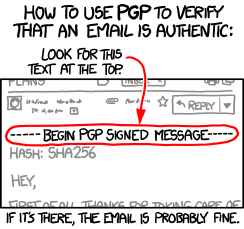The setting at hand is more or less grim irony, reflecting the modern days. Ontological categories adopted by characters in the setting map to the modern ontologies. In the storyline there are references to Manhattan project, the Beatles, popular culture. Those are well-hidden though.
I'm running a moderately epic city setting and I want the following to be a common practice:
Any agreement regarding a rent of an item or a mount is [magically] bound to the item or mount itself so that the law enforcement officers can quickly validate the agreement using its [magical] nature with some kind of a reader. It may be dispellable (as it has two copies), it may be detectably-forgeable (with a lot of effort from the forger), it should be government-issued.
Currently I think that a good way to approach this problem would be to have an equivalent of public key cryptosystems, such that blanks for agreements are issued by governments and preemptively signed by them. Both parties use a signed blank as the deal is made, sign with their own signatures and exchange those.
It would be great if we were able to mark items with the ID numbers of the blanks such that officers are able to scan marked items easily.
Given that the setting implies a certain degree of science, I would say that this can work but I'd love to have something simpler.
This approach can work, but needs some improvements to meet all the criteria.
- Is there a simpler magical way to do what I want (dispellable, hardly forgeable, government-issued, item-describing agreements) in the RAW world?
- Is there a cool RAW way to "write" readable yet invisible symbols on items, mounts et al and let those symbols be there until those are erased?
- If there is no known alternative to public key crypto to accomplish that in D&D3.5, what is the best way to describe public key crypto within RAW world?


